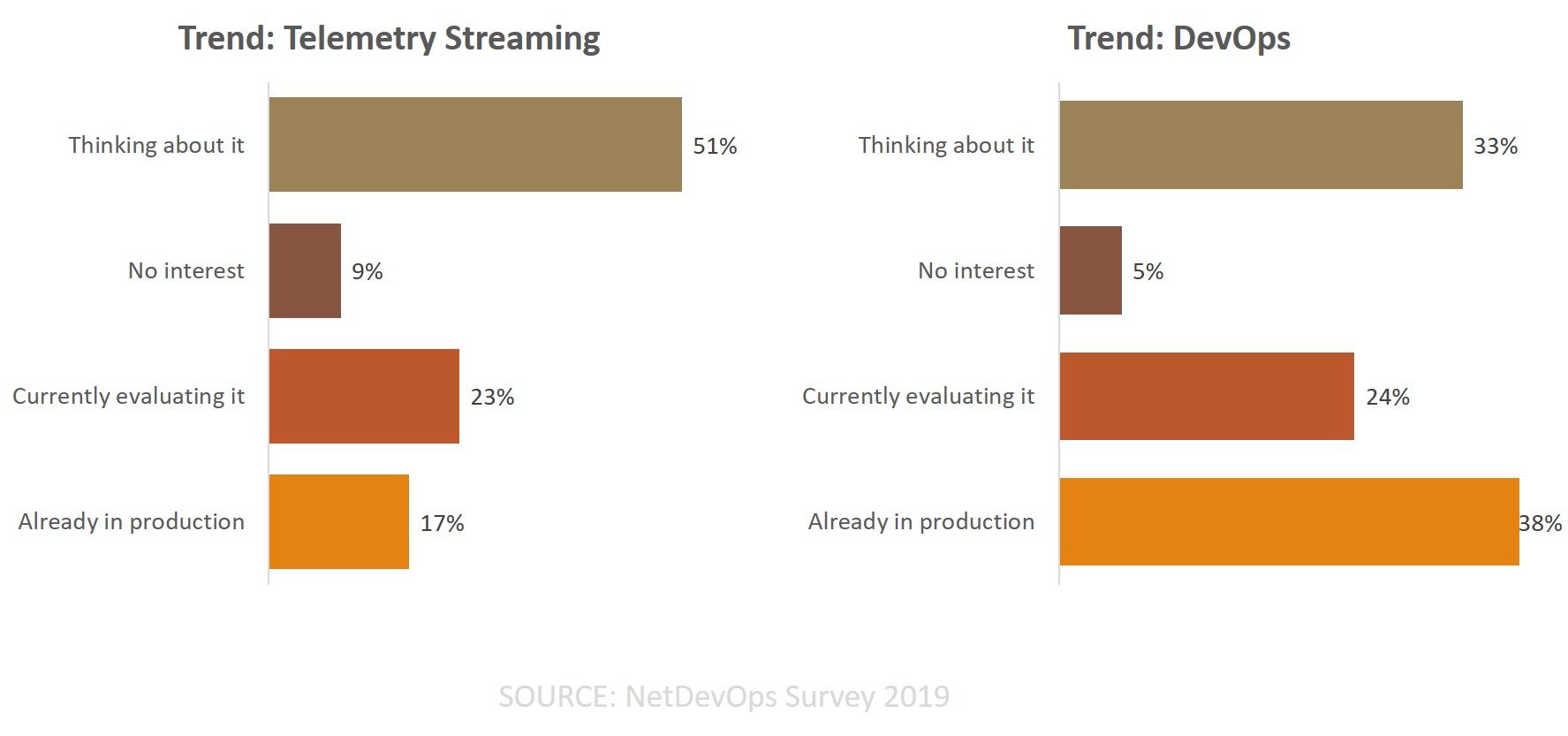NetDevOps Survey: The Increasingly Automated Life of NetOps
The latest NetDevOps survey is in and the results show promise for the state of the enterprise deployment pipeline.
A community effort, the NetDevOps survey digs for details not normally found in surveys focusing on "the network." Key findings are delivered in no-nonsense fashion at the aforementioned link as well as the raw data. Which yours truly eagerly downloaded to explore.
The inescapable truth of this survey is that the life of a network operations professional is increasingly automated. From configuration changes to anomaly detection, from software upgrades to day zero provisioning via vendor solutions, automation is now the norm. That's not surprising to us; our own research has found the same.
What I love about this survey is not that it's a good validation point for our own research, but that it dives into details that we don't. For example, while we ask about the state of pipeline automation, we do so in general terms. The NetDevOps survey digs into the specifics of what that automation means on an activity by activity level.
Out of thirteen different network operations, an average of 4.75 are automated today. Configuration-related activities (generation, deployment, and archiving) along with data collection/reporting and compliance checks are the most frequently cited as being automated.
Most organizations are not adopting an immutable approach to infrastructure. That is, a plurality allow configuration changes via CLI in addition to automated deployments via the pipeline. Much like we've seen in other spaces, notably the identity management space, these kinds of allowances can prove problematic. A single source of truth ensures changes can be easily rolled back if issues occur. Changes via CLI introduce greater entropy, which can fast-track trouble over time.
Trouble, i.e. anomaly detection, today primarily relies on automated up/down/threshold alerts. But there are a growing number of NetOps who are turning to event correlation using rules engines as well as AI/ML. SNMP remains the primary source of telemetry, with other protocol-based (ICMP) and traditional logs following close behind. API and streaming telemetry are used by about a quarter of the respondents. Fully half of respondents are "thinking about" telemetry streaming, while almost a quarter (23%) are evaluating it. The use of both API and streaming telemetry indicates a modernizing network operations practice as both are key technologies that enable AI/ML and a future state of AIOps.

As NetOps go building out their automated future, it should surprise no one—least of all anyone who's followed our own research—that Python is the language of choice. When it comes to tools, Ansible is a clear favorite for automated configuration generation and deployment activities while Git continues to grow as the repository of choice.
The trend toward automation is a matter of survival for most network operations practices. With over one-third managing 251-1000 devices and another one-third managing 1001-5000 devices, automation is the most efficient means of keeping up with increasingly demanding deploying schedules.
The NetDevOps survey finds that most respondents push major changes to production on a monthly basis. The majority push major changes "less than once per month" or "1 to 5 times per month." Minor changes, however, are more frequently pushed to production—on a weekly basis. The majority push minor changes either "1 to 5 times per week" or "more than once a day."
There is a great deal more detail in the NetDevOps survey and I highly encourage a read through to get a feel for the pulse of the increasingly automated network operations world.
